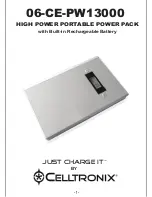
-20-
3.2
Chip extraction
When cutting wood for a long period and when using
the machine industrially and with materials that
generate dust which represents a health hazard, the
machine must be connected to a suitable dust
extractor unit. The inside diameter of the attachable
hose connector 3 (Fig. 1) is 35 mm (1 3/8 in).
3.3
Saw blade selection
Besides requiring the use of a sharp saw blade,
good quality cuts depend primarily on the choice of
the saw blade type according to the material being
cut.
For different types of material the following saw
blades should be selected:
Universal blade for max. cutting meters espe-
cially for battery-powered machines:
TCT saw blade Ø 160 x 1.6 x 20, 16 teeth
(6 1/4 x 1/16 in. x 20 mm)
For rip and cross cuts in soft or hard wood:
TCT saw blade Ø 160 x 1.8 x 20, 24 teeth
(6 1/4 x 5/64 in. x 20 mm)
For cuts especially longitudinal to the grain in
soft or hard wood:
TCT saw blade Ø 160 x 1.8 x 20, 16 teeth
(6 1/4 x 5/64 in x 20 mm)
For cuts especially across the grain in soft or
hard wood:
TCT saw blade Ø 160 x 1.8 x 20, 32 teeth
(6 1/4 x 5/64 in. x 20 mm)
3.4
Change of saw blade
Make sure that the saw blade being mounted is
properly sharpened since this is the basic require-
ment for perfect cuts.
Proceed as follows to change the saw blade:
• Press locking bolt first 8 (Fig. 2) in order to lock
the saw blade.
• Allen key 5 (Fig. 1) provided in a holding device
on the machine has to be inserted into the flange
screw 18 (Fig. 3) and turned until complete
engagement of the locking bolt. To slacken off the
flange screw, turn the Allen key
counterclock-
wise
, then remove the screw and front clamping
flange 12. Open the retractable saw guard 13 by
pulling forwards and remove the saw blade by lift-
ing it to the front and pulling out to the bottom.
• Before fitting the new saw blade, inspect the two
clamping flanges for foreign particles clinging to
them and clean. When inserting the saw blade,
note the correct direction of rotation: the teeth
must point in the same direction as the arrow on
the upper saw guard. Fit the clamping flange and
flange screw and tighten by turning
clockwise
.
The locking bolt can be used as an aid as when
removing the blade.
Do not open the battery and protect
it against shocks. Store the battery
at a dry and frost-proof place.
Cover the contacts if the battery is
stored outside the charger. Short-
circuits due to metallic jumpering
bear the risk of fire and explosion.
Do not carry out rapid charging
processes consecutively. Do not re-
charge the battery after short opera-
tions (e.g. 3 minutes).
Observe the instructions on envi-
ronmental protection.
In Germany, extractors tested for the
extraction of wood dust are specified.
Safe compliance with air pollution limits
(2 mg/m
3
) is ensured only if the machine
is connected to a tested extractor unit
(such as an industrial vacuum cleaner or
a combination unit).
Always remove the battery from the
machine before changing the saw
blade (refer to section 4.3).
Do not fit saw blades that are
cracked or otherwise damaged.
Only use saw blades with a diame-
ter between 149 (5 3/4 in.) and 160
mm (6 1/4 in.) and a bore diameter
of 20 mm.
Do not use HSS saw blades.
The locking bolt 8 (Fig. 2) and the
switch lever 2 (Fig. 1) can only be
operated alternately.
















































